How to Celebrate the New Year in Greenland? Terrify Everyone
Masked figures chase people throughout Mitaarfik.
Picture this: It’s dark out, the kind of pitch black that comes with winter in the far north. You’re walking with friends around town when you hear a noise, followed by some heavy breathing nearby. Two large figures emerge from around the corner, one carrying a harpoon, the other wearing seal skins and holding a long chain. Both have faces smeared with soot and distorted by tightly wound strings across their noses. You start looking for an exit, but two more figures with masks appear just steps away but approaching rapidly. They wave large sticks, until your group starts to run.
Of course, you’re not in real danger. This is just another night during the first week of January in Ilulissat, Greenland. The annual tradition of Mitaarfik is in full swing.
Marking the end of the Christmas holiday and culminating on January 6, this ancient tradition mixes fear and fun, costumes and candy, and Inuit beliefs with modern twists.
Winter on the world’s largest island is long and very dark. It’s a time for feasting and social engagement, when many pass the stretched-out evenings with traditional performances, games, and dances. January 6 marks the Epiphany (Kunngit Pingasut Ulluat in Greenlandic), a Christian feast day that pays homage to the baptism of Jesus—and in Greenland, it’s also the main day of Mitaarfik, typically kicking off on the evening prior. This centuries-old tradition has both Inuit and Scandinavian culture at the core, and has been celebrated throughout many generations to mark the New Year.
Mitaarfik involves mostly silent performances, conducted by a group of characters called mitaartut (and a mitaartoq is a single person) who wear masks and frighten or tease passersby. The core of the word comes from mitaarneq, which means “cutting faces,” “distortion of the face,” or “making grimaces.” They are not allowed to speak, and their goal is to remain anonymous. But how scary or funny it is depends on where in Greenland you are.

In Nuuk towards the south of Greenland, the tradition is wholesome. The masked characters knock on the doors of local homes and enter the hallway. They’re then encouraged to dance, sometimes accompanied by music. In these versions, children often participate with improvised dancing. If the residents cannot guess who is under the mask, the mitaartoq is rewarded with a treat such as candy or cake—though sometimes the sweets are a way to rid them from the home. “Sometimes you find out who has been mitaartut, other times you never find out,” says local Arnánguak Skifte Lynge.
Whereas in places like Ilulissat towards the north, the tradition is a little more on the sinister side. “Here, it’s about being scary, really scary,” says Lynge. These mitaartut tend to be older, and they descend when night falls. They carry weapons like harpoons, whips, or chains, and they sometimes chase people. “It is easy to get hysterically frightened in droves when a large mitaartoq suddenly comes running around the corner, or when you are surrounded by several mitaartut,” Lynge adds. “It’s really scary—but fun.”
Historically, some have used masks made of leather or cardboard, wore raggedy clothes that were stuffed to appear larger, and sometimes carried a bird’s wing covered in soot.
“Children scream when captured,” says Birgitte Sonne, a research fellow and associate professor in the Department of Eskimology at the University of Copenhagen. “[They] squeal in being rolled over and hugged in the snow.” It’s quite the mix of horror and humor.
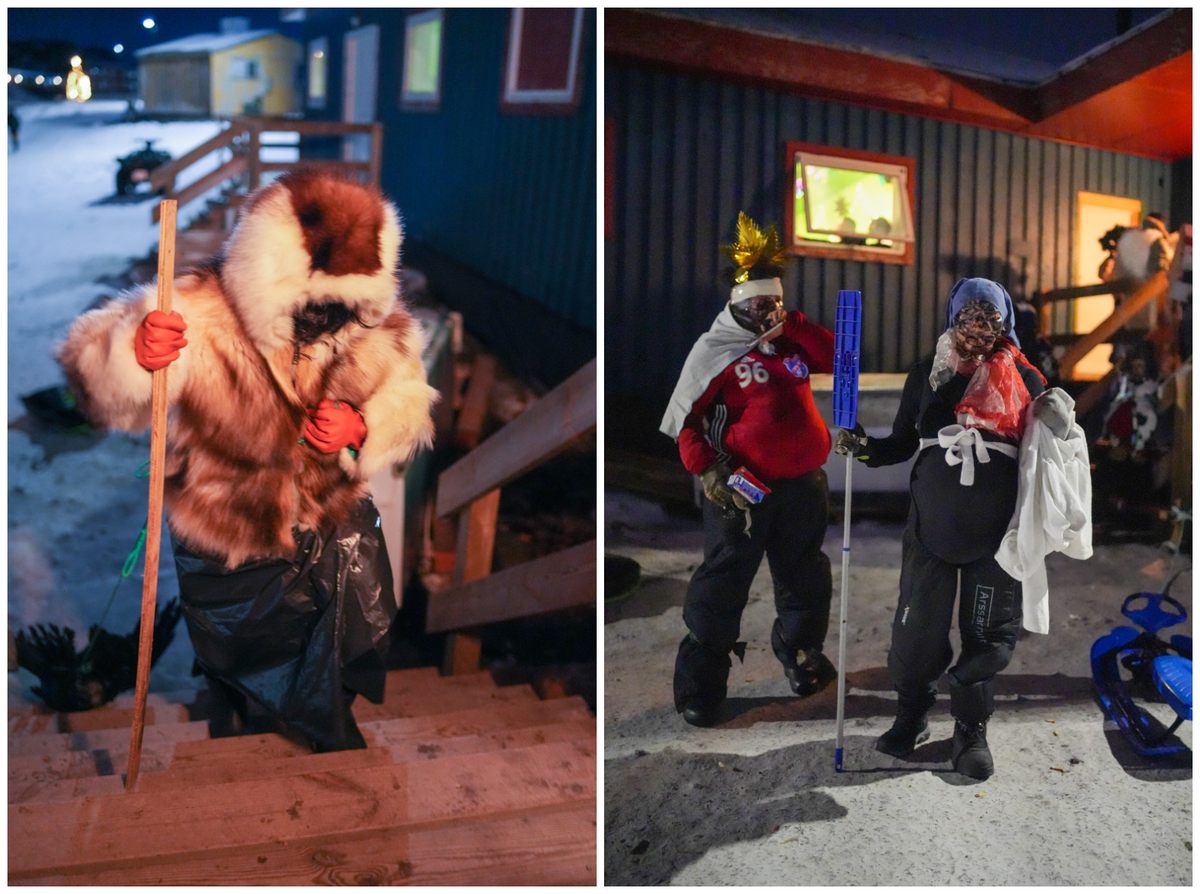
“Mitaarneq has more recently been spread to East Greenland,” says Sonne, “causing some of the old Uaajeerneq customs to be revived, where individuals danced in representation of various mythic figures and animals.” The Uaajeerneq is an ancient drum dancing and dramatic performance tradition that was celebrated in the winter and summer, more popular in East Greenland. Fear and humor were always the main themes, typically performed for entertainment but also as a teaching tool for children on how to deal with hardships.
The full origin of Mitaarfik is muddled, but comes from a combination of word of mouth, old literature, and legends. “The oldest source of disguised merrymakers at Christmas goes back to the 1820s, and they may or may not have been called mitaartut,” says Sonne.
Early literature connects the annual Mitaarfik tradition to Sassuma Arnaa, or “Sea Woman.” In this Inuit belief, a shaman ritual is meant to please the deity so that she will release the seals for hunting and break the bad luck of terrible weather. “Although the Sea Woman ritual was an apparent annual event in the south, it was occasioned by a crisis—wild storms that time and again broke open the newly formed ice, preventing people from moving out on the ice for breathing-hole hunting,” Sonne explains.
There were also Inuit feasts full of masks and performances. “Costume games and dances which either portray scenes from real life or are purely creatures of imagination are quite common among the Inuit, either as elements in feasts of a cultic character or as entertainment pure and simple when time goes slowly,” writes Inge Kleivan, author of Mitârtut: Vestiges Of The Eskimo Sea-Woman Cult In West Greenland.
“The Inuit mitaartut tradition has its roots in an ancient Inuit fertility ritual and is closely associated with the myth of the Sea Woman,” agrees Randi Sørensen Johansen, curator at the Greenland National Museum. In photos from the early 1900s, it’s clear that genitalia was drawn or carved on the mitaartut costumes, but any association with fertility and reproduction has faded today. “The contemporary symbolic value of the tradition leans more towards the cozy and entertaining aspects.” He goes on to add: “The reason for the survival of the mitaartut tradition may partly be due to the coziness it brings, and also because Greenlanders in general have a keen interest in the mysterious and enjoy hearing and sharing stories of the unexplained.”
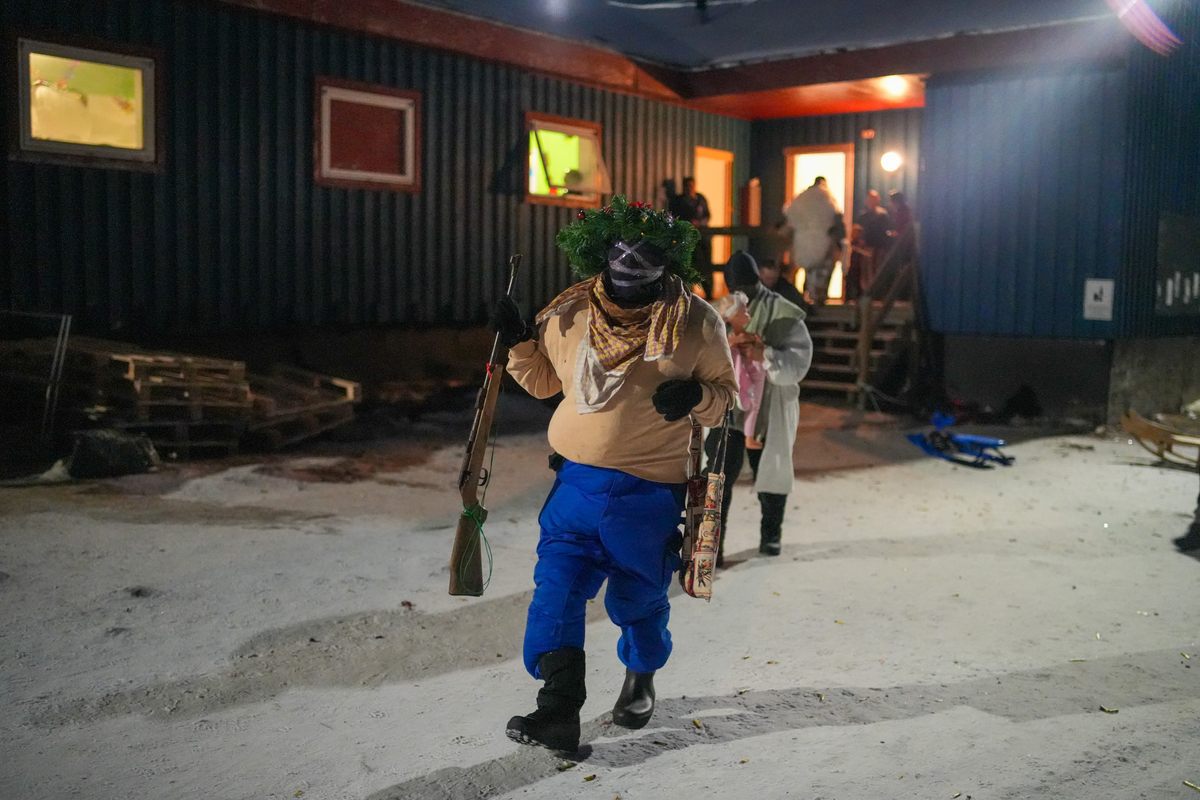
Over the years, Mitaarfik is thought to have been influenced by Christianity (brought to Greenland in 1721), such as the mute performances involved in the Scandinavian representation of the Three Holy Kings. In Denmark’s religion tradition, “the disguised and masked ‘runners’ go from house to house, knocks, goes in and doesn’t say a word, gets cakes and sweets, and goes out just as silently, while the hosts try to guess who they are,” according to Sonne. “It’s clear with the demand for silence and masking to [become unrecognizable] that it has rubbed off on Mitaarfik.”
Some aspects of the Mitaarfik celebration were deemed illegal over the years, ultimately affecting the more risque qualities. Still, there is no proof that the traditions stopped completely, especially in some of the more remote settlements.
Whether you’re being chased by a hulking, masked figure brandishing weapons or being serenaded by a child hoping for treats, the tradition continues its duality. It also seems to prefer keeping its history on the more obscure side. The complicated origin of the tradition seems to mimic the masked mitaartoq: shrouded in mystery and unwilling to reveal itself. This is a festivity that rewards the unknown. No matter how it came to be or whether participants choose fear or fun, it’s a mysterious way to start the new year, full of unknown things to come.
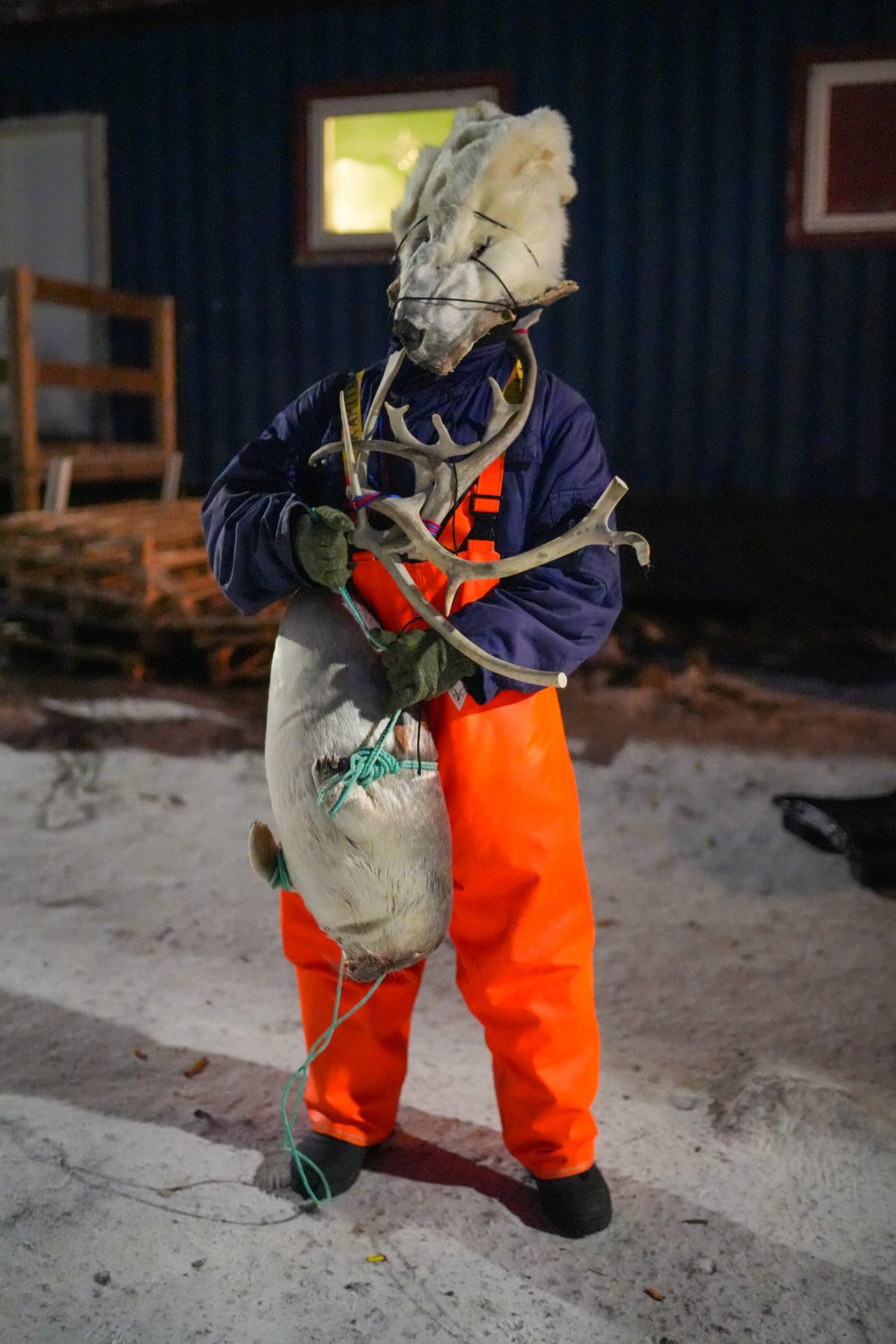


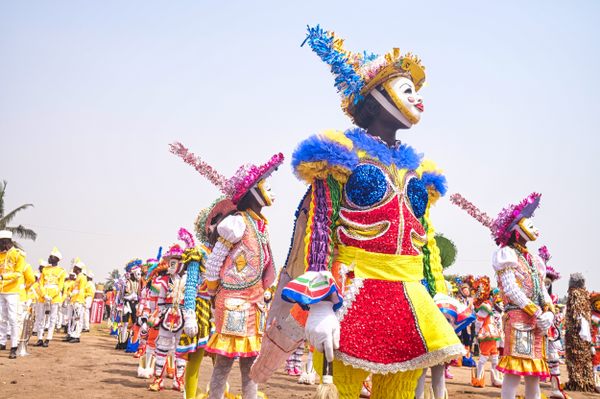
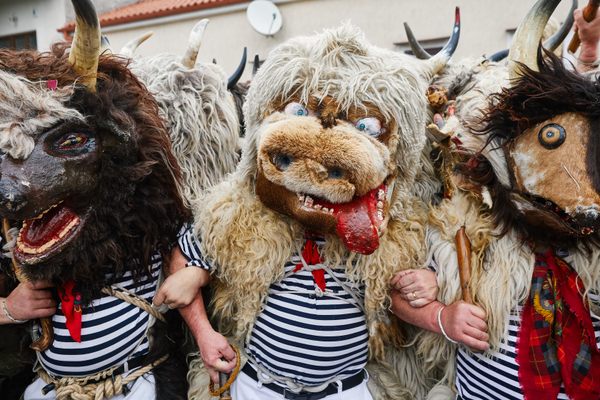
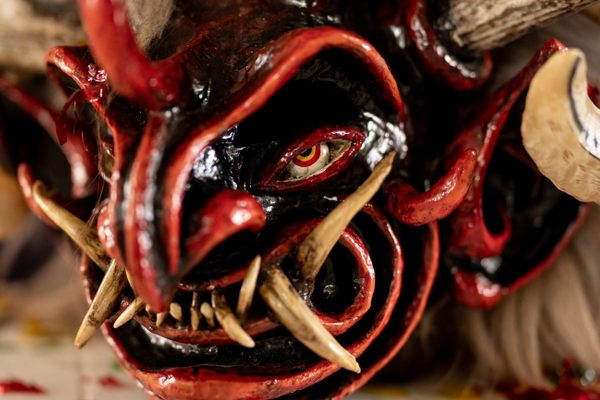







Follow us on Twitter to get the latest on the world's hidden wonders.
Like us on Facebook to get the latest on the world's hidden wonders.
Follow us on Twitter Like us on Facebook